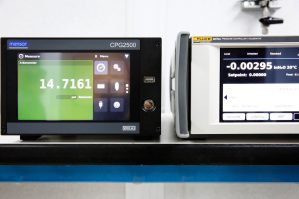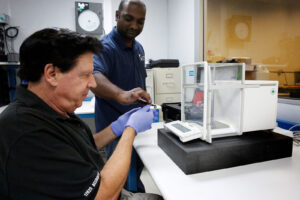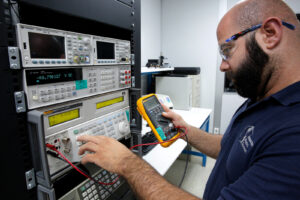Have you ever questioned whether your centrifuge is giving trustworthy results? An uncalibrated centrifuge can lead to inaccurate test data, regulatory non-compliance, costly downtime, and even safety hazards. In industries where precision is non-negotiable—such as clinical diagnostics, pharmaceuticals, and biotechnology—these risks can’t be ignored.
Quick Answer: What is Centrifuge Calibration?
Centrifuge calibration is the process of verifying and adjusting a centrifuge’s speed, temperature, and timing to ensure accuracy, compliance, and safety. It typically involves measuring actual performance with specialized instruments, comparing results to manufacturer specifications, and making corrections to keep equipment within allowable tolerances.
Why Centrifuge Calibration Matters
A centrifuge is the backbone of many laboratory operations. When it’s not performing correctly, the ripple effect is huge.
- Clinical Example: A blood separation test run at the wrong RPM can cause incomplete plasma separation, resulting in false patient results.
- Pharmaceutical Example: Inconsistent centrifuge temperature during vaccine production may compromise product stability and delay approvals.
- Research Example: A slight timer inaccuracy can throw off sample preparation, affecting reproducibility of published studies.
Calibration eliminates these risks, keeping both data integrity and compliance intact.
Standards and Regulations You Can’t Ignore
Centrifuge calibration isn’t optional—it’s required under strict regulatory frameworks.
- ISO/IEC 17025 ensures traceable calibration for testing labs.
- GMP (Good Manufacturing Practices) mandates documented calibration for production equipment.
- GLP (Good Laboratory Practices) requires ongoing equipment validation and maintenance.
- CLSI standards outline best practices for laboratory calibration protocols.
Skipping calibration can result in failed audits, costly product recalls, or even loss of accreditation.
How Centrifuge Calibration is Done
Calibration follows a precise, step-by-step process:
- Inspection: Rotors are checked for cracks, corrosion, and wear. Safety locks and seals are tested.
- Speed Verification: A tachometer measures actual RPM, compared against the centrifuge display. Adjustments are made until values match within ±1%.
- Temperature Testing: Refrigerated centrifuges are verified with a calibrated thermometer at multiple setpoints.
- Timer Accuracy: A stopwatch confirms exact runtime against programmed duration.
- Imbalance and Safety Checks: Unbalanced loads are used to ensure automatic shutoff functions properly.
- Documentation: Every reading and adjustment is recorded, producing a calibration certificate for audits.
How Often Should You Calibrate a Centrifuge?
Calibration frequency depends on use:
- High-volume clinical labs: every 3–6 months.
- Pharmaceutical and GMP facilities: at least annually, often semi-annually.
- Research and academic labs: annually or sooner if discrepancies are noticed.
Tip: Always follow the manufacturer’s recommended schedule for optimal reliability.
Common Problems Found During Calibration
Regular calibration often reveals hidden issues before they become costly failures:
- Display errors in RPM or temperature readings.
- Excessive vibration due to rotor imbalance.
- Cooling system drift in refrigerated units.
- Worn lid locks posing safety hazards.
By catching these early, labs can prevent downtime and ensure uninterrupted workflows.
Best Practices to Keep Centrifuges Accurate
- Always load samples evenly to reduce strain on the motor.
- Clean rotors after use to prevent corrosion.
- Store rotors in a dry environment when not in use.
- Keep a logbook of calibrations, repairs, and adjustments.
- Partner with accredited providers for third-party calibration.
Choosing the Right Calibration Provider
Not all providers are equal. Look for:
- ISO 17025 accreditation for trusted traceability.
- Experience with your specific centrifuge model (microcentrifuge, benchtop, ultracentrifuge).
- On-site calibration services to minimize downtime.
- Detailed certificates for compliance audits.
Final Thoughts: Don’t Gamble With Accuracy
Every centrifuge spin impacts patient outcomes, product safety, or research credibility. Skipping calibration or delaying it puts all three at risk. By prioritizing regular centrifuge calibration, labs can ensure reliable results, maintain compliance, and protect both their reputation and bottom line.
👉 Take action today: schedule a professional centrifuge calibration with an accredited provider to safeguard your lab’s accuracy and compliance.





